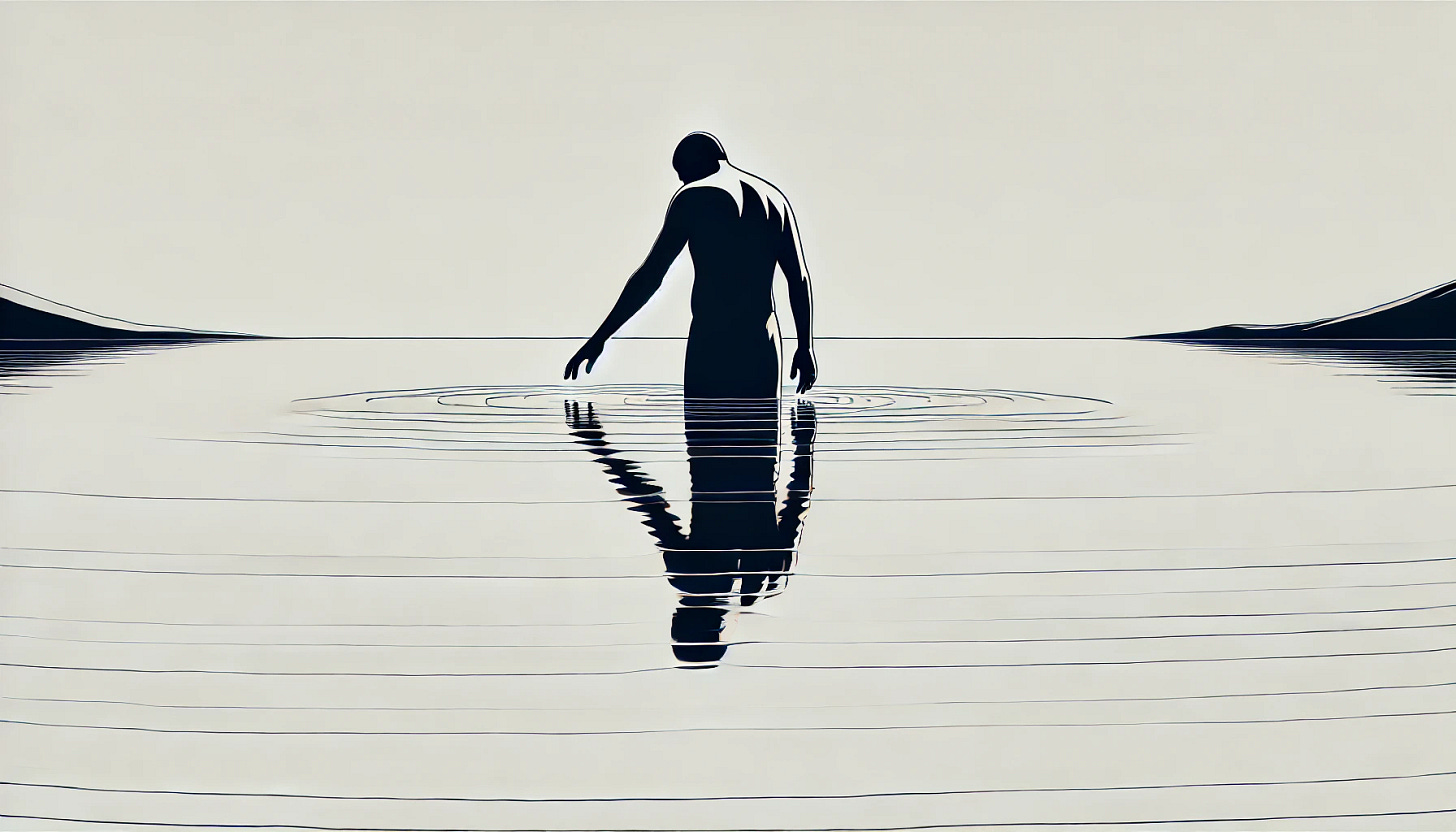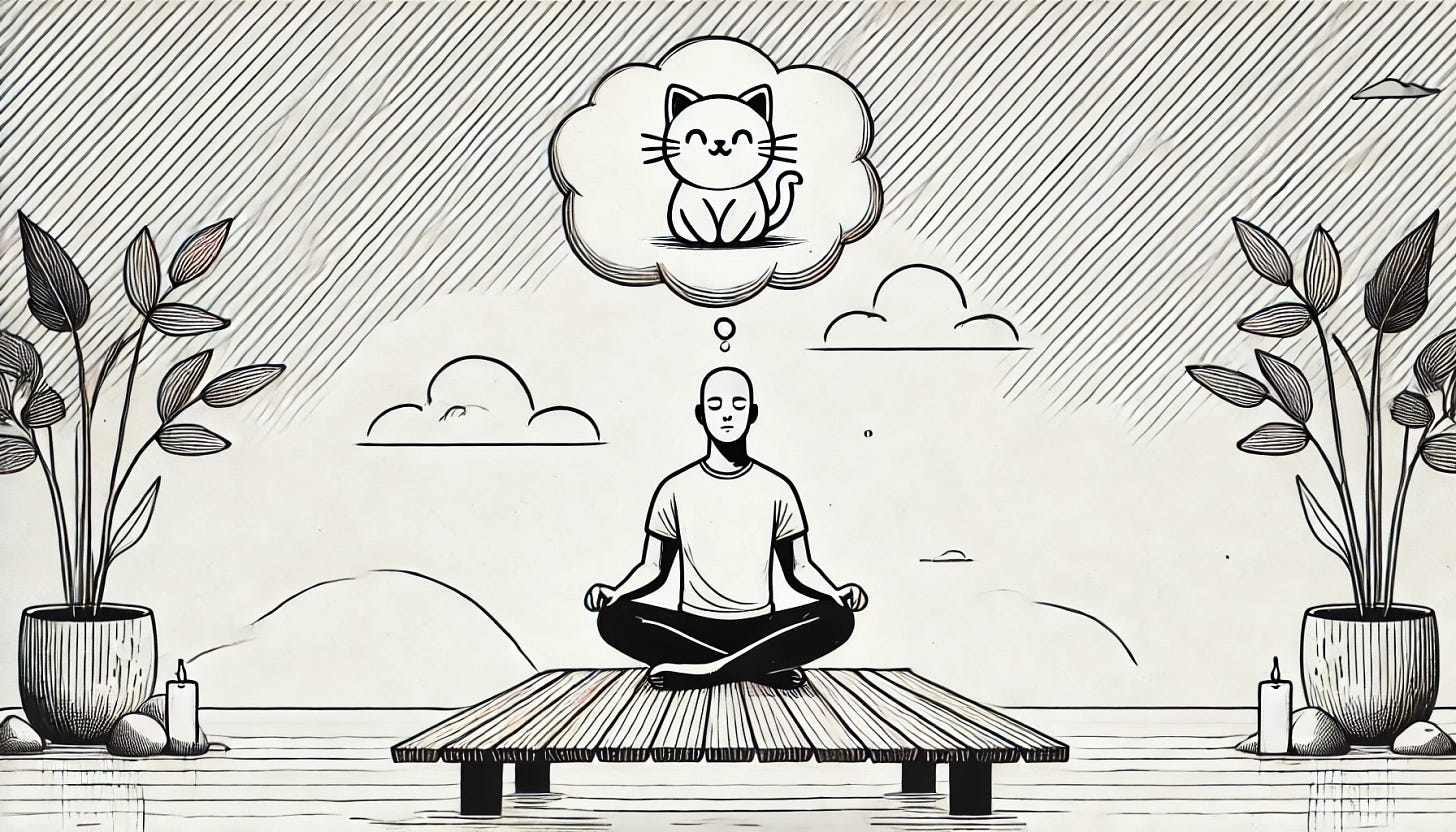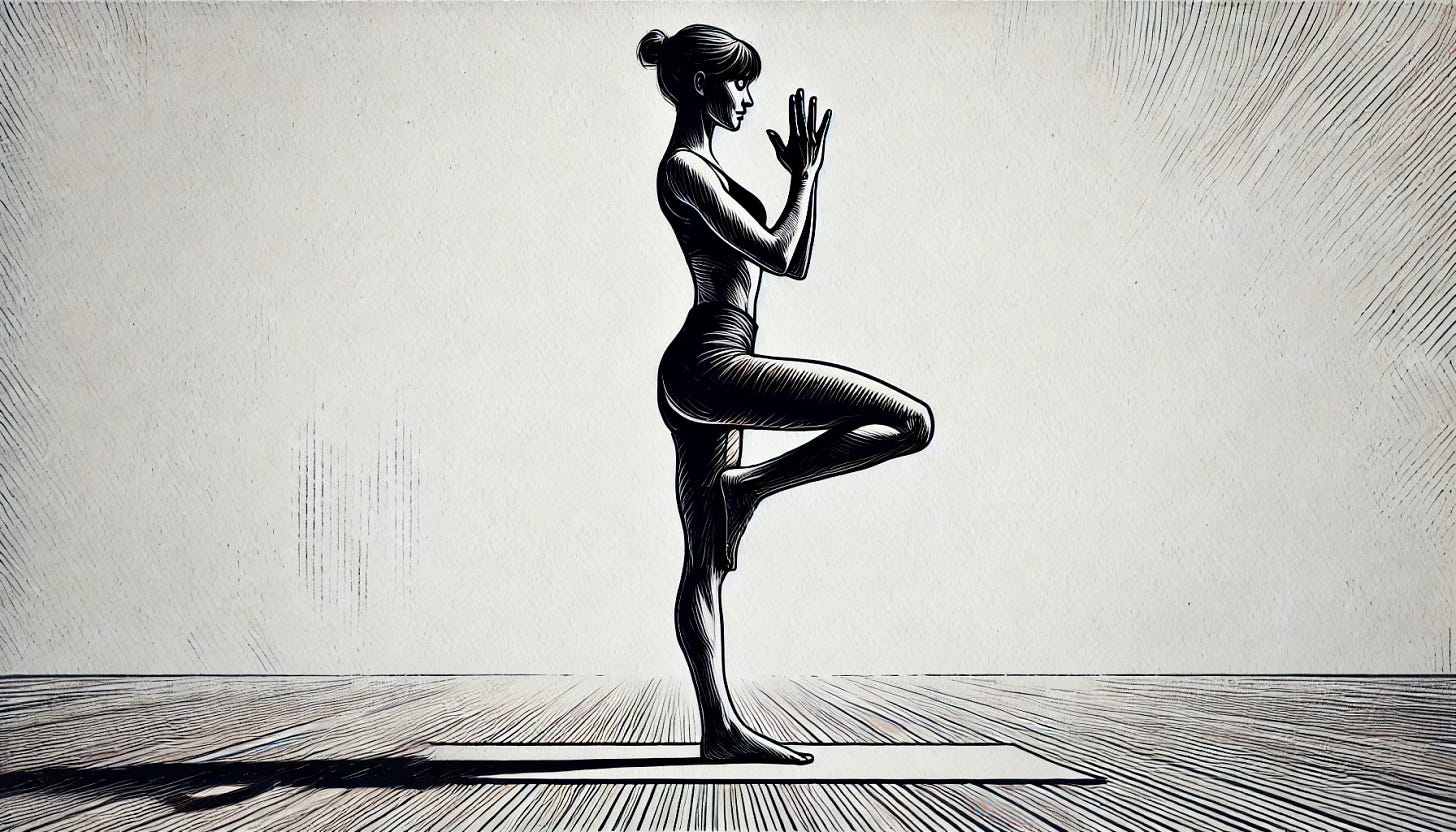Yoga Should Always Be “Hard”
Sutra 13: Tatra sthitau yatno’bhyāsaḥ — Of these two, effort towards steadiness of mind is practice.
Patañjali’s Yoga Sūtra 13
तत्र स्थितौ यत्नोऽभ्यासः
Tatra sthitau yatno’bhyāsaḥ
Of these two, effort towards steadiness of mind is practice.
Expanding further on the concept of how “practice” & “detachment” comprise the whole of restraining the fluctuations of the mind (which is yoga), Patanjali tells us that effort towards steadiness of mind comprises the first part of that equation.
Effort.
There’s a subtlety here that’s very informative to the way we approach time on the mat.
Normally, you might think of effort as something that’s “given” as a means to an end. It’s the thing you generate in order to make, arrange, or become whatever is needed. You could read this instruction blithely, like, “yeah obviously you have to try to steady the mind in order to steady it — so what do I need to do to get there?”
But approaching yoga that way can leave you totally missing the point.
There’s a great metaphor/visual laid out in Iyengar’s Light on Life that I tend to return to when confronting this somewhat paradoxical idea (of bringing about stillness of mind through effort) — the rippled lake.
I’ll adapt it a bit here ↙️
— imagine you are walking out into a lake looking down at the water’s surface.
— the surface is disturbed by your legs as you move, and ripples are bouncing all around.
— you’re looking in the water, but your reflection is distorted by the movement in the water.
— you think, if only it were smoothed off, I could see my face clearly.
— so you reach down with one hand and pass it over the water side to side, attempting to remove the ripples.
— but your hand only causes more ripples…
So too can our “efforts” to steady the mind simply perpetuate the fluctuations.
It’s kind of comical, isn’t it?
We tend to approach yoga with the idea that “steadiness of mind” is something we can achieve through some combination of postures, good instructions, and time. But more often than not, the things we “do” to work towards this state become their own form of ripple and disturbance.
We live in an additive-focused culture. The prescription to solve any problem tends to be “more” of something. If it doesn’t work, you just need to find another option and keep trying until something works…
5 am club. Cold plunges. Hyperbaric chambers. Meditation retreats. Magic mushrooms. Traveling to India. Learning an instrument.
In San Diego, you definitely know someone who can’t stop talking about their newest bio-hacking / optimal performance / I’m better than everyone else routine.
All of these can totally be good things, but which combo, sequence, or specific one reliably works to steady the mind people of all backgrounds and capacities?
None.
So what is the effort that Patanjali is talking about?
Side Bar:
Speaking of comedy, my fellow Massachusetts-raised Bill Burr just put out a new, surprisingly wholesome, standup. Everyone’s favorite perpetually angry, piss & vinegar filled/Bostonian has evidently been turning inward, and I can’t recommend watching it highly enough.
To cut to the chase here — the common/easy take away is that this practice (yoga) isn’t so much about what you’re doing, as it is about what you’re not doing.
…but, wait —
It’s impossible to try not to do something.
The classic example is telling someone: “Don’t think about cats.”
What do they always end up doing?
— they think about cats.
Try telling yourself to “steady the mind”, what are you really doing?
— thinking about steadying the mind (which is itself a mental fluctuation).
It’s ultimately like waving your hand over the surface of the lake water. You’re probably just adding more ripples.
Returning to that rippled lake metaphor, what do we need to do to see clearly?
Wait.
For real, it’s just wait.
The only real chance you have of a clear surface is activated by stopping your movement and allowing the ripples to subside. You can only mess it up, really. You don’t make it happen — you just create the conditions for it to occur.
So the better question to ask is, how should I wait?
Keeping with the metaphor of standing in the lake, how would you ensure that you aren’t swaying around by accident (and making more ripples) as you attempt to stand still?
Same way we stay balanced in tree pose — find a reference point in your field of awareness that isn’t moving and fix your gaze on it. You’d look across the lake at a tree, or a dock, staring at it intently, using it to steady your stance by the power of your proprioception (sensing your body within space). Unless you have vertigo, this is a reliable method for keeping your physical body still.
So when you step on the mat to practice, what’s the reference point to fix your attention on to steady the mind? The breath. Sure, the breath “moves”, but we aren’t trying to actually be frozen or inert — we are really just aiming for steady.
The breath is constantly in the present moment, and logically cannot be anywhere else. That’s why it serves as our first reference point to train the focus on as we aim to restrain the mind from wandering into the past or future.
As you focus your attention on the breath, the ripples in your mind-stuff do not immediately subside. But over time, the energy that was in the water dissipates and the surface becomes more clear / reflective. Eventually you can see right down through the water to the bottom.
Effectively, the effort you give towards focusing on the breath is the practice.
Here’s why:
When you try to focus on the breath, you’re directing your attention willfully towards a particular appearance in your field of conscious awareness (which just so happens to be always grounded in the present moment).
In directing your focus that way, you are effectively excluding the other things that might normally grab your attention (ruminations, imaginations, speculations) — ripples that, if you try to grab them or smooth them out, create more ripples.
effort towards steadiness of mind is practice.
But remember, let’s avoid the trap of assuming that “focusing on the breath” is the cure-all thing we “do” to really “do yoga”.
The breath is a convenient reference point. But there are many more!
As you deepen in yoga practice, the idea is to begin extrapolating that core practice (of focusing wholly on the breath) to other appearances in your field of conscious awareness.
So similarly, it’s not a matter of how perfectly aligned your warrior 2 posture is — it’s a matter of how wholly you give your attention to performing that pose.
In a vinyasa flow, we are frequently reminded of impermanence as we visit each pose for but a moment, fluidly moving from one to the next without major changes.
Yet we aim to maintain the effort as our constant throughout the series.
No matter how many times you’ve “done” warrior 2, there is always a little more depth to explore. Even if your knee is at a perfect 90 degree angle and your shoulders are within a micrometer of the point directly above your hips, you can deepen the posture by opening your shoulders/heart, holding it longer, or maybe coming halfway out and holding there instead.
There’s literally a never ending amount of variations you can explore. In this light, the practice becomes a matter of simply picking one, and going as far as you can within it.
So there should never be a point at which yoga becomes easy.
It’s always supposed to be “hard”.
If it isn’t, that’s a signal that you aren’t giving your full effort. If you are quietly reserving a portion of your attention capacity — let’s say 80% of you is focused on warrior 2, but 10% is anticipating the next pose, and 10% is congratulating yourself for how much better your pose looks than the sorry saps in the back row — then you leave it up to chance where that energy flows.
Don’t leave it up to chance.
Exercise the one muscle that’s really worth flexing: agency.
Every time you notice that your focus has shifted or you aren’t giving 100%, bring it back, make another rep.






